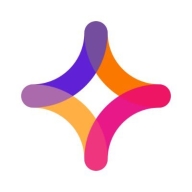

Jitterbit Harmony and Azure Data Factory are integration platforms that provide unique benefits. Jitterbit Harmony is notable for its competitive pricing and customer support, while Azure Data Factory is recognized for its extensive feature set and scalability, which justifies its higher cost.
Features: Jitterbit Harmony facilitates quick integrations with its intuitive automation, pre-built templates, and user-friendly interface for simplified data mapping. Azure Data Factory stands out with advanced data transformation capabilities, comprehensive cloud integration, and a powerful orchestration tool, ideal for complex engineering tasks.
Room for Improvement: Jitterbit Harmony could enhance its data transformation functionalities and expand its cloud integration capabilities. Its scalability for large enterprises could be improved. Azure Data Factory might benefit from streamlined setup processes, more user-friendly interfaces for non-technical users, and enhanced straightforwardness in its feature-rich environment.
Ease of Deployment and Customer Service: Jitterbit Harmony offers simple deployment and robust customer support, ensuring a smooth adoption. Azure Data Factory presents a more intricate setup process but is supported by Microsoft’s extensive online resources and support network, catering well to enterprise-level requirements.
Pricing and ROI: Jitterbit Harmony provides lower setup costs, offering good value for businesses with minimal integration needs. Azure Data Factory, requiring a larger investment, delivers substantial ROI due to its robust features and high scalability, making it suitable for organizations requiring extensive data automation.
Our stakeholders and clients have expressed satisfaction with Azure Data Factory's efficiency and cost-effectiveness.
The technical support from Microsoft is rated an eight out of ten.
The technical support is responsive and helpful
The technical support for Azure Data Factory is generally acceptable.
Azure Data Factory is highly scalable.
The solution has a high level of stability, roughly a nine out of ten.
Azure Data Factory should consider how to enhance integration or filtering for more transformations, such as integrating with Spark clusters.
The inability to connect local VMs and local servers into the data flow is a limitation that prevents giving Azure Data Factory a perfect score.
Sometimes, the compute fails to process data if there is a heavy load suddenly, and it doesn't scale up automatically.
The pricing is cost-effective.
It is considered cost-effective.
The orchestration features in Azure Data Factory are definitely useful, as it is not only for Azure Data Factory; we can also include DataBricks and other services for integrating the data solution, making it a very beneficial feature.
The platform excels in handling major datasets, particularly when working with Power BI for reporting purposes.
It connects to different sources out-of-the-box, making integration much easier.
| Product | Market Share (%) |
|---|---|
| Azure Data Factory | 5.2% |
| Jitterbit Harmony | 0.6% |
| Other | 94.2% |


| Company Size | Count |
|---|---|
| Small Business | 31 |
| Midsize Enterprise | 19 |
| Large Enterprise | 55 |
| Company Size | Count |
|---|---|
| Small Business | 8 |
| Midsize Enterprise | 3 |
| Large Enterprise | 1 |
Azure Data Factory efficiently manages and integrates data from various sources, enabling seamless movement and transformation across platforms. Its valuable features include seamless integration with Azure services, handling large data volumes, flexible transformation, user-friendly interface, extensive connectors, and scalability. Users have experienced improved team performance, workflow simplification, enhanced collaboration, streamlined processes, and boosted productivity.
Jitterbit Harmony offers an advanced integration platform that simplifies data transformation, helps users quickly connect apps, and automates workflows, streamlining complex business processes efficiently.
Designed to meet the high demands of modern businesses, Jitterbit Harmony enables seamless integration across cloud and on-premise environments. By leveraging its powerful tools and user-friendly design, users can accelerate innovation, reduce operational costs, and enhance productivity. It bridges the gap between traditional and emerging technologies, ensuring organizations can adapt quickly to market changes and remain competitive.
What are the key features of Jitterbit Harmony?Jitterbit Harmony finds its application across numerous industries, from enhancing data integration in the healthcare sector to optimizing supply chain logistics in manufacturing. It supports financial institutions by improving transaction processing and facilitates real-time data connectivity in retail environments, making it a versatile choice for diverse industries looking to innovate rapidly.
We monitor all Data Integration reviews to prevent fraudulent reviews and keep review quality high. We do not post reviews by company employees or direct competitors. We validate each review for authenticity via cross-reference with LinkedIn, and personal follow-up with the reviewer when necessary.